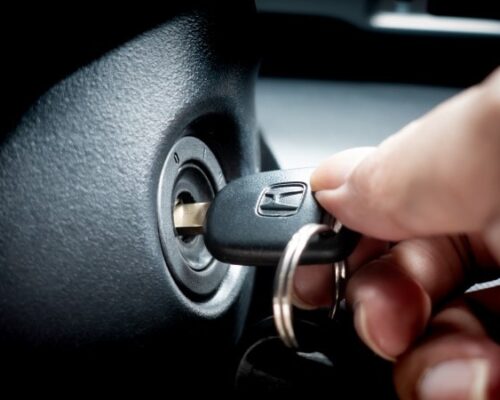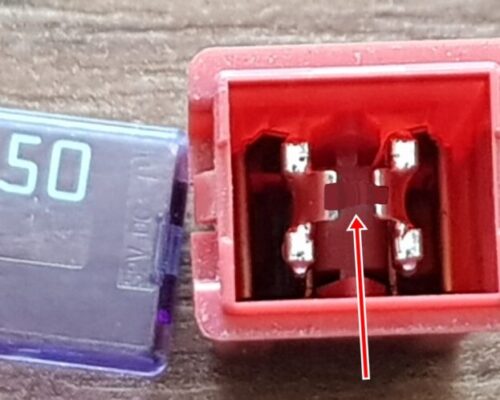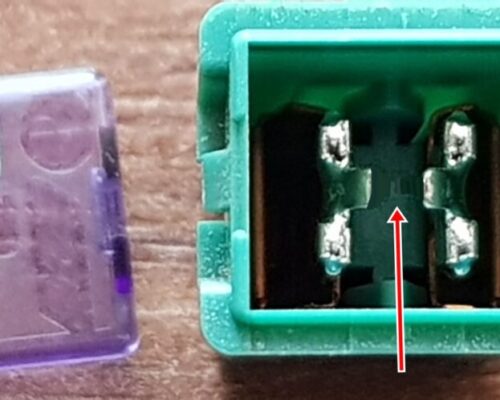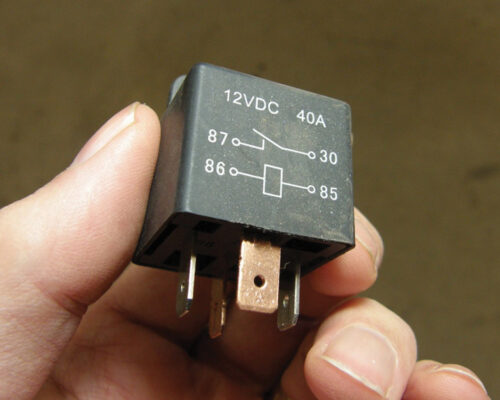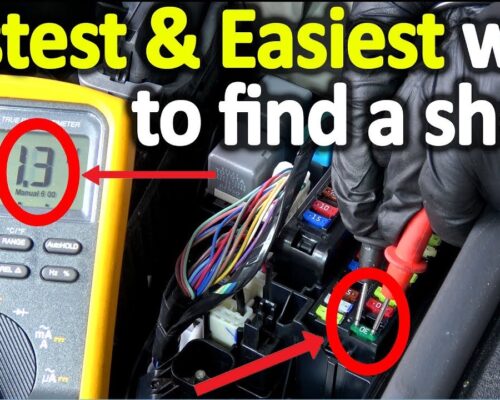
How to Reset Odometer: Is It Legal to Reset?
There are a few different ways that you can reset your odometer, but is it legal to do so? If you own the car, then you should be able to reset the odometer without any legal issues. However, if you’re leasing or financing the car, then resetting the odometer may void the contract.
It’s always best to check with your lender or leasing company before resetting the odometer.
- Pull up to a safe area off of the road and put the car in park
- Locate the odometer reset button, which is usually on the instrument panel near the odometer display
- Press and hold the reset button for a few seconds until you see the odometer begin to change back to zero miles
- Release the button and allow the odometer to finish resetting itself
- Drive away safely and keep track of your new mileage starting from zero miles again
How to spot odometer rollback fraud on your used vehicle
Why is Resetting Odometer Illegal?
In many jurisdictions, it is illegal to reset an odometer without authorization from the appropriate government agency. The rationale for this law is that odometers are used to calculate vehicle mileage taxes and fees, and resetting them artificially lowers the amount of money owed to the government. Additionally, resetting an odometer can be used to defraud potential buyers by making a vehicle appear to have less wear and tear than it actually does.
What Happens If You Reset Your Mileage?
If you reset your mileage, it will be set back to 0. This can be useful if you want to track your progress over time, or if you’re starting a new workout regimen and want to see how far you can go. However, keep in mind that resetting your mileage will also erase any previous data, so make sure to back up your information before resetting!

Credit: www.roadandtrack.com
How to Reset Odometer After Engine Swap
An engine swap is a big job, and one of the most important things to remember is to reset the odometer. This ensures that your car’s mileage is accurately reflected and can help prevent problems down the road. Here’s how to do it:
1. Park your car on level ground and set the parking brake.
2. Remove the negative battery cable from the terminal.
3. Disconnect the speed sensor from its wiring harness.
The speed sensor is located on the transmission; refer to your vehicle’s service manual for its exact location.
4. Unplug the connector for the odometer display from its socket on the instrument panel cluster.
5. Press and hold in the trip odometer reset button while you reconnect the battery cable to its terminal.
Continue holding in the button until “trip A” or “trip B” appears in the odometer display; this indicates that it has been reset successfully.
How to Legally Reset Odometer
If you’re looking to legally reset your odometer, there are a few things you’ll need to do. First, find the individual who last serviced your vehicle and have them sign a statement saying that they’ve inspected the mileage reading and it’s accurate. Next, take this statement to your local DMV office and have them update the mileage on your registration.
Finally, make sure to keep records of all repairs and maintenance done on your vehicle from this point forward so that you can show proof of the new odometer reading if needed.
While resetting your odometer may seem like a hassle, it’s actually a pretty simple process as long as you have all of the necessary documentation. So next time you get your car serviced, don’t forget to ask for that statement confirming the new mileage reading!
How to Reset Digital Odometer
You may be surprised to learn that you can reset your digital odometer without any professional help. All you need is a few simple tools and a little bit of know-how. Here’s how to do it:
First, locate the fuse box in your vehicle. It should be under the dash, near the steering column. Once you’ve found it, remove the fuse for the instrument cluster.
This will disable the power to the odometer, allowing you to safely remove it from the vehicle.
Next, use a small flathead screwdriver to pry off the plastic cover over the odometer itself. Be careful not to damage anything as you do this.
With the cover removed, you should see two screws holding in the odometer assembly; remove these as well.
With the screws removed, gently pull out the entire assembly. You may need to wiggle it a bit to get it free, but be careful not to break any of the delicate connections inside.
Once it’s out, disconnect all of the wires going into it; there should be four or five of them.
Now that everything is disconnected, it’s time to reset your odometer! To do this, simply find a small hammer and tap on each of theNumber 0s until they all light up red (this may take a few taps).
Once they’re all lit up red, hold down on both buttons next tothe Number 0s for about five seconds; this will cause themto start flashing rapidly . When they stop flashing , releaseboth buttons and then press down on just one – thiswill reset your odometer backto zero !
Reset Odometer After Oil Change
We all know that one of the most important things we can do to keep our cars running smoothly is to change the oil regularly. But did you know that it’s also important to reset your odometer after an oil change?
If you don’t reset your odometer, it will continue to track the mileage from your last oil change, even though you’ve put fresh oil in your car.
This can lead to inaccurate tracking of your car’s maintenance and performance over time.
Resetting your odometer is easy – just follow these simple steps:
1. Locate the button or knob that controls the odometer on your dash.
In most cars, this is located near the speedometer.
2. Press and hold the button or turn the knob until the numbers on the odometer start flashing.
3. Release the button or knob and wait for the numbers to stop flashing and reset to zero.
That’s it! Now you can be confident that your odometer is accurately tracking your car’s mileage again.
Why Did My Car Mileage Reset
If you’ve ever wondered why your car’s mileage reset after filling up with gas, you’re not alone. It’s a common question, and there are a few different reasons why it happens.
First, it’s important to understand that your car’s odometer doesn’t actually track the number of miles you’ve driven.
Instead, it tracks the number of revolutions of your car’s tires. So, when you fill up with gas, the odometer resets to zero because the tires have effectively started over from square one.
Secondly, most cars have what’s called a trip meter.
This is a separate gauge that tracks the number of miles you’ve driven since the last time you reset it. So, if you want to know how many miles you’ve driven in total, you’ll need to add up the numbers on both the odometer and trip meter.
Finally, it’s worth noting that some cars will reset the trip meter automatically every time you fill up with gas while others will keep track of your mileage until you manually reset it yourself.
If your car has this feature, it can be helpful to remember to reset the trip meter after each fill-up so that you always have an accurate record of your total mileage.
Does Replacing the Transmission Reset Mileage
The answer to this question is a bit complicated. In short, yes, replacing the transmission can reset the mileage on a car, but there are some caveats.
First, it’s important to understand how mileage is tracked on a car.
The odometer in your car tracks the total distance that the car has traveled since it was manufactured. This means that if you replace the transmission (or any other major component), the odometer will no longer be accurate.
However, most modern cars also have something called an Event Data Recorder (EDR).
The EDR is a device that records data about the car’s operation, including things like mileage, speed, and engine temperature. So even though the odometer may not be accurate after a transmission replacement, the EDR will still have an accurate record of the car’s mileage.
In conclusion, replacing the transmission will reset the mileage on your car’s odometer, but it won’t affect the accuracy of the Event Data Recorder.
How to Reset Odometer on Toyota
If you’re looking to reset the odometer on your Toyota, there are a few different ways that you can do it. Here’s a quick guide on how to reset the odometer on your Toyota:
First, find the “trip meter” button on your Toyota’s dash.
This is typically located near the speedometer and other gauges. Once you’ve found the trip meter button, press and hold it for about five seconds. After five seconds have passed, release the button and then turn off your car’s ignition.
Now, start up your car again and press and hold the trip meter button for another five seconds. As soon as you release the button, your Toyota’s odometer will reset back to zero. And that’s all there is to it!
Odometer Reset Tool
An odometer reset tool is a device that can be used to reset the odometer on a vehicle. This can be useful if you have recently purchased a used car and would like to know how many miles it has been driven. It can also be used to reset the odometer after an oil change or other maintenance procedure.
There are a few different types of odometer reset tools available on the market, but they all generally work in the same way. Most tools will require you to connect them to the OBD-II port under the dash of your vehicle. Once connected, you will then need to follow the instructions provided by the tool in order to reset the odometer.
While an odometer reset tool can be a useful tool, it is important to note that tampering with the odometer of a vehicle is illegal in most states. If you are caught tampering with the odometer, you could face severe penalties including fines and jail time.
Conclusion
Resetting an odometer is perfectly legal, as long as it’s done truthfully. Many people choose to do this when they sell their car, so that the new owner doesn’t see how many miles the car has actually been driven. It’s important to be truthful about the car’s mileage both when resetting the odometer and when selling the car, as it’s illegal to misrepresent a vehicle’s mileage.


